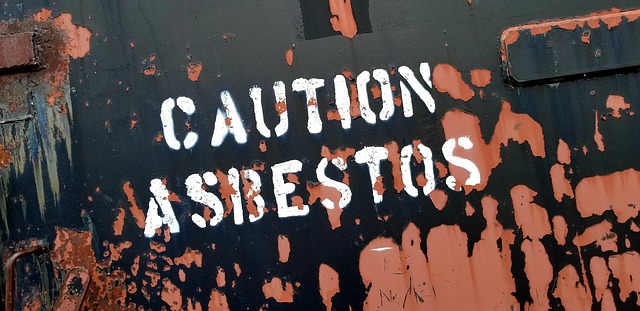Asbestos is a natural mineral that became popular as a heat-resistant non-corrosive substance. Exposure and inhaling the asbestos fibers lead to serious diseases, such as asbestosis and the deadly cancer mesothelioma. After you inhale or ingest the minute asbestos fibers, the particles stick to the tissue lining of the lungs and other internal organs. Since each exposure to asbestos raises the body load of asbestos fibers, reducing and minimizing exposure is critical.
Here are some health tips to protect yourself from asbestos exposure:
Awareness of Asbestos Deposits
Asbestos exists naturally all across the world, although luckily not everywhere. Awareness about the areas where asbestos is present is essential to prevent getting exposed to asbestos. The mineral crystallizes in particular types of rock spotted near mountainous regions and in alluvial soil. Raising awareness about asbestos deposits will progressively make people cautious while visiting areas with high asbestos deposits. If you are unsure whether anything contains asbestos, presume it does unless proven otherwise.
Remember that simply looking at flooring or ceiling panels will not tell you if they contain asbestos. Do not disturb it if you suspect something is likely to contain asbestos, and seek professional help for its transfer or removal, handling, and disposal.
Asbestos fibers can get lodged inside your body and irritate the inner lining of the lungs, the stomach, and so on. Over a period of time, its presence in the body leads to cancerous cell growth which is incurable. This cancer is known as mesothelioma. The website mesotheliomahope.com is dedicated to helping people who are suffering from mesothelioma. It provides resources and information on mesothelioma treatment, medical and legal professionals, and financial possibilities to help patients.
Modify Working Conditions and Protocols
Miners, construction workers, navy, and army personnel were most affected by work environments that exposed them to asbestos. However, the risk is still present because of the excessive use of asbestos in construction, paper, and the forces from the twenties onwards.
Every job requires commitment, but exposing individuals to hazardous materials such as asbestos is not an appropriate choice. Modifications to work protocols are crucial to limit exposure as much as feasible. Its implementation will need to begin with an explanation of what the job entails, the work methods, and the controls.
Additionally, ensure that people performing the task understand the revised work plan. Wear protective equipment whenever you cut, saw, drill, scrape, or otherwise disrupt asbestos-containing materials. Bring no exposed footwear or work clothes home. A standard vacuum cleaner is not sufficient to protect against exposure, so don’t sweep, dust, or vacuum asbestos material. If you lack the necessary asbestos removal training, entrust this work to experts.
Personal Protective Equipment
Workers can considerably reduce asbestos exposure by using protective equipment and following good work and decontamination procedures. HEPA-filtered cartridges are present in all respirators. Safety goggles or glasses will ensure eye protection, which shields your eyes from falling or flying debris. Disposal of any asbestos-contaminated machinery is also critical.
Use disposable coveralls to keep asbestos particles off your body. Although most overalls allow air to circulate, you may become overheated, creating an unpleasant build-up of moisture inside the suit. Rubber boots will keep your feet safe from sharp items. It’s best to use pull-on washable rubber boots with no laces that can be reused at the end of the project.
Getting a few pairs of disposable rubber gloves is a good idea. Each employee inside the work area should wear gloves, and the gloves should be disposed of in a trash bag designated for asbestos-related waste once the job is over.
Effective Disposal of Waste
Make plans to dispose of any waste that may contain asbestos safely. If asbestos is not properly removed and disposed of, it can be hazardous to human health. Using a recognized asbestos disposal authority is the safest approach to removing asbestos. Waste removal authorities must have a permit for the transport of asbestos before transferring the asbestos to a permitted landfill.
Efficient Housekeeping
Drop ceilings, acoustic ceilings, and suspended ceilings are the popular ceiling works associated with asbestos tiles. They came in 2X2 square and 2X4 rectangular shapes and sizes. Generally, light in color with a powdery appearance, some texture, and pinhole markings. However, any tiles that appear to contain asbestos should be reported. Also, report any suspected shattered tiles to the appropriate authorities.
Housekeepers and caretakers must never try to dry asbestos floor tiles. Keep the broken and fallen ceiling tiles as they are until they have been identified as asbestos-free, especially in homes built around the twenties and the eighties. You can remove them yourself once you know it is safe. However, asbestos abatement professionals will remove asbestos tiles. Asbestos removal workers should also remove cracked and degraded asbestos flooring tiles.
It is critical to report any compromised materials to related authorities immediately. Do not try to clear up suspected asbestos particles on your own! Report any defective insulation in pipes and ceiling tiles. Take precautions to keep others away from the exposed area until help arrives. Asbestos exposure can be prevented if you recognize where it is likely to appear and take care to avoid disturbing it.
Buying or Renovating an Old Home
Inquire from your real estate agent about the presence of asbestos in or around your home. Do not perform DIY renovations on an older property without first checking for asbestos. Check asbestos products for signs of damage regularly, and any asbestos material that has become worn or damaged should be removed. Avoid handling or disturbing any materials that may contain asbestos in your house. Never remove asbestos without the assistance of a professional. Consult your local or state regulatory agency or an asbestos removal contractor about safely removing asbestos products.
Health Screening
If you suspect you have been exposed to asbestos, you should consult your doctor for appropriate health screening and tests. Keep track of any health changes that have occurred. Before any symptoms arise, have a Mesothelioma blood test done.
Doctors begin by conducting a series of diagnostic tests on patients exposed to asbestos for a long period. Diagnostic tests such as an X-ray or a pulmonary function test examine how well the lungs operate. If you experience signs of mesothelioma, such as chest discomfort, difficulty breathing, or a persistent cough, visit a doctor immediately.
Quitting smoking decreases the likelihood of developing asbestos-related diseases in patients exposed to asbestos. Maintain a balanced diet rich in fruits, vegetables, and grains which can help reduce your cancer risk.
Conclusion
Workplace asbestos exposure generates more cancer cases than any other workplace hazard. However, asbestos-related disorders are still prevalent in people who have worked or been around asbestos for many years, even though there is a ten to 70-year lag between exposure to asbestos fibers and the onset of symptoms. Mesothelioma is sometimes preventable, but first, you must learn about the risks of asbestos, which is still present in many homes and workplaces. Current preventive measures still have gaps that become a hindrance to completely eradicating asbestos exposure in the long run. If you have been exposed to asbestos, consult a mesothelioma lawyer. They can guide you through the legal process.







